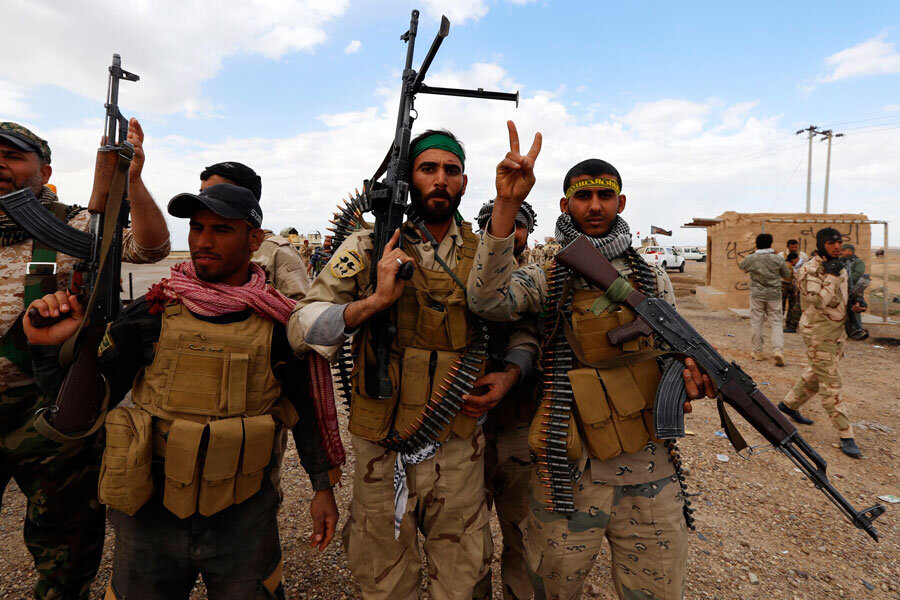Why Iran's latest foray into Iraq doesn't worry Pentagon – yet
Loading...
| Washington
United States troops are not the only advisers to the Iraqi security forces right now. The Iranian military is on the ground as well, providing pointers and, by some reports, fighting side by side with Iraqi soldiers to retake ground from the Islamic State.
This fact has riled US lawmakers, who have spoken out against the open presence of Iranian-backed militias.
These are, after all, many of the same militiamen who caused an estimated half of all US troop casualties during America’s eight-year war in Iraq, they point out.
Yet top US military officials are actually sanguine, in many respects, about the presence of Iranian advisers. They know that they’re there – and what’s more, they add, these Iranian-backed forces might actually be able to help.
Gen. Martin Dempsey, chairman of the Joint Chiefs of Staff, endeavored to explain why to outraged lawmakers this week.
“It’s worth reminding ourselves, Iran and its proxies have been inside of Iraq since 2004,” General Dempsey noted during his testimony before the Senate Armed Services Committee this week.
“Frankly, it will only be a problem if it results in sectarianism.”
The force currently waging brutal urban warfare against the Islamic State for control of the city of Tikrit, the hometown of former Iraqi dictator Saddam Hussein, is made up about one-third of Iraqi security forces. The other two-thirds are Shiite militia from the Popular Mobilization Committee, Dempsey told lawmakers.
The alliance could actually be a net plus, he argued. “If they perform in a credible way – rid the city of Tikrit [of the Islamic State], turn it back over to its inhabitants – then it will, in the main, have been a positive thing in terms of the counter-ISIL campaign.”
Both the US and Iranian forces are interested in driving fighters from the Islamic State, also known as ISIL, out of the country, US military officials point out.
“We don’t deny that there is Iranian influence and there’s Iranian activity and a force presence inside of Iraq,” a senior military official with US Central Command, which oversees US military operations in the Middle East, told reporters last month. “But thus far,” he added, “we have a common goal – and there’s a common interest there.”
The Iranian militias have been one of the driving forces behind considerable sectarian rifts in the past, however, and analysts warn that this could happen again in short order.
The Sunni population, which has suffered oppression and violence at the hands of the Shiite militias, are understandably “reluctant to trust its security to the Shiite militias,” notes a recent report from the Institute for the Study of War (ISW), a Washington think tank.
What’s more, former Iraqi Prime Minister Nouri al-Maliki – who was ousted from his job because of his sectarian agenda – appears to be maneuvering to establish himself as the leader of a group of these militias.
On concern is that equipment provided to Iraqi security forces could end up in the hands of the Iranian militias. “In terms of ensuring that, you know, our resources don’t migrate over to Shia militia, there is no easy way to be absolutely certain that that can’t happen,” Gen. Lloyd Austin, head of US Central Command, acknowledged during a hearing Tuesday on Capitol Hill.
At this point, the participation of the militias in anti-Islamic State efforts “is supported by the Sunni members of parliament and the local leaders – but that’s dependent on the behavior of the militia as they conduct this campaign,” Dempsey told lawmakers during a different hearing on the same day. “And, by the way, we are watching.”







